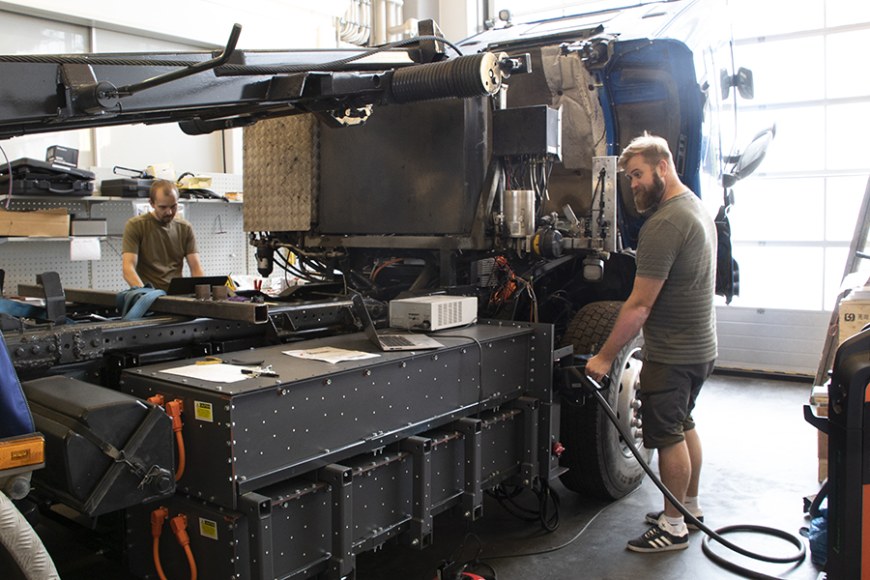The goal during the testing phase is to ensure that the electric powertrain works as intended and that the auxiliary systems, converted to run on electricity, function normally and as a whole. The converted truck, equipped with conventional work machinery, will be tested in Helsinki the upcoming winter for ploughing snow from streets.
Helsinki’s objective of becoming a carbon neutral city by 2030 lays the foundation of the project. The City’s innovation company Forum Virium Helsinki coordinates the project activities and provides support with technical and administrative issues.
Due to the components shortage as well as long lead-times, changes to the project timeline turned out to be inevitable during last autumn. The global availability of components was greatly affected by the COVID-19 pandemic, as was the delivery of the electric motor, which did not take place until late spring.
On the other hand, due to the business secrets, the CAN data of the motor had to be decoded by Tampere’s University of Applied Sciences (TAMK) leading to further hic-ups on the progress of the project. With additional funding applied at the beginning of the year, the conversion progress did continue in Tampere.
“The project has been rife with technical challenges, the tackling of which has been time consuming and resource demanding. Hence, the efficient cooperation between the project parties as well as external stakeholders has led to increased expertise and technical competence for implementation of electrification projects”, states Project Manager Shabnam Farahmand from Forum Virium Helsinki.
A challenging yet multi-faceted project
The dismantling of the diesel engine and fuel system was carried out by Helsinki City Construction Services Stara. The car was towed to Tampere, where electric conversion including the assembly of the truck’s electric powertrain and other mechanical components was conducted by TAMK.
The technical research centre of VTT built required simulation models for determining technical specifications of the truck’s electric motor and batteries. The simulation model was used to map motor options that would provide enough power for snow ploughing, and accordingly the quote for a suitable option was received in summer 2021.
“The installation of the electric motor and batteries to the truck was done here at Tampere. We also had to convert some of the auxiliary machinery to run on electricity and develop the control unit of batteries and the motor”, indicates field project staff Tuomo Leppäkoski from Tampere University of Applied Sciences.
The automotive technology education at TAMK has also benefited from the project and several theses and internships are inspired by eRetrofit project’s PoC experiment.
“The project has been very complex and challenging, asking for extensive cooperation between employers, companies, and students”, expresses Head of Industrial Engineering Aija Paananen from Tampere University of Applied Sciences.
“The cooperation between cities, companies, and universities carried out in the eRetrofit project has already refined the innovation into an effective business foundation that is going to create jobs and reduce emissions”, asserts Program Director of Data and IoT Timo Ruohomäki from Forum Virium Helsinki.
The electrification of logistics goes hand in hand with the development of IoT technologies and data analytics, with vehicles generating more and more detailed data about their operation to support transport planning and maintenance. This has also been evident in the eRetrofit project, which has benefited from the data expertise accumulated via Forum Virium’s other projects.
Challenges still ahead towards electrified vehicle’s inspection and registry
A motor vehicle is required to undergo a modification inspection if major structural changes apply to its bodywork and chassis. The conversion of the diesel truck into an electric truck has presented even more challenges as modification inspections of these types of utility vehicles have never been performed in Finland before.
“Utility vehicles are subject to a range of important requirements of which the inspector needs to have a clear understanding. In the future, it would be great to see modification inspectors who are open to innovative smart solutions so that sustainable and electrified transport can be further promoted”, Aija Paananen aspires.

Photos: Emmi Suominen, TAMK
Additional information
